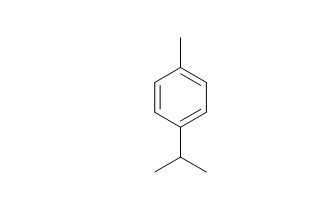p-Cymene
Reference standards.
Inquire / Order:
manager@chemfaces.com
Technical Inquiries:
service@chemfaces.com
Tel:
+86-27-84237783
Fax:
+86-27-84254680
Address:
1 Building, No. 83, CheCheng Rd., Wuhan Economic and Technological Development Zone, Wuhan, Hubei 430056, PRC
Providing storage is as stated on the product vial and the vial is kept tightly sealed, the product can be stored for up to
24 months(2-8C).
Wherever possible, you should prepare and use solutions on the same day. However, if you need to make up stock solutions in advance, we recommend that you store the solution as aliquots in tightly sealed vials at -20C. Generally, these will be useable for up to two weeks. Before use, and prior to opening the vial we recommend that you allow your product to equilibrate to room temperature for at least 1 hour.
Need more advice on solubility, usage and handling? Please email to: service@chemfaces.com
The packaging of the product may have turned upside down during transportation, resulting in the natural compounds adhering to the neck or cap of the vial. take the vial out of its packaging and gently shake to let the compounds fall to the bottom of the vial. for liquid products, centrifuge at 200-500 RPM to gather the liquid at the bottom of the vial. try to avoid loss or contamination during handling.
Phytochemistry Letters2021, 43:80-87.
Curr Issues Mol Biol.2022, 44(10):5106-5116.
Eur J Pharmacol.2024, 981:176883.
Evid Based Complement Alternat Med.2015, 2015:165457
Nutr Cancer.2024, 76(3):305-315.
Antioxidants (Basel).2021, 10(11): 1802.
Heliyon.2023, 9:e21652.
Int. J. of Pha. and Phy. Res.2015, 7(1):144-149
Pharmaceutics.2023, 15(6):1771.
Naunyn Schmiedebergs Arch Pharmacol.2024, 03148-x.
Related and Featured Products
Archives of Biochemistry and Biophysics, 01 Apr 1978, 187(2):307-314.
Biosynthesis of aromatic monoterpenes: conversion of gamma-terpinene to p-cymene and thymol in Thymus vulgaris L.[Reference:
WebLink]
METHODS AND RESULTS:
The major components of the volatile oil of thyme (Thymus vulgaris L.) are the aromatic monoterpenes, thymol (38%) and p-Cymene (23%), and the cyclic diene, γ-terpinene (28%). The time course of incorporation of 14CO2 into the volatile terpenoids of thyme cuttings suggested a biosynthetic sequence by which γ-terpinene gave rise to p-Cymene, which in turn yielded thymol. Intact leaves from young thyme plants converted exogenous γ-[G-3H] terpinene into p-Cymene and thymol, whereas p-[G-3H]cymene gave rise to only thymol in this tissue. Preincubation of the tissue with unlabeled p-Cymene followed by incubation with γ-[G-3H]terpinene resulted in an increase of radioactivity inp-Cymene and a substantial decrease of radioactivity in thymol. Similar isotopic dilution experiments with other possible intermediates, such as α-terpinene and terpinen-4-ol, produced no significant change in product distribution. All of the biosynthetic products were identified by radio gas-liquid chromatography and by the synthesis of several derivatives, which were analyzed by radio chromatography or crystallized to constant specific activity.
CONCLUSIONS:
These results provide, for the first time, strong evidence that thymol is biosynthesized by the aromatization of γ-terpinene to p-Cymene followed by hydroxylation of p-Cymene.
3,3',4',5,6,7,8-heptamethoxyflavone
Catalog No: CFN95021
CAS No: 1178-24-1
Price: $268/10mg
Suspenoidside B
Catalog No: CFN95071
CAS No: 2161432-08-0
Price: $413/5mg
6''-O-Acetylsaikosaponin D
Catalog No: CFN95090
CAS No: 64340-45-0
Price: $288/5mg
Polygalin J
Catalog No: CFN95175
CAS No: N/A
Price: $318/5mg
Securoside A
Catalog No: CFN95294
CAS No: 107172-40-7
Price: $318/5mg
2,3-Dehydrosilychristin
Catalog No: CFN95370
CAS No: 57499-41-9
Price: $318/5mg
3'-Hydroxy-2,4,5-trimethoxydalbergiquinol
Catalog No: CFN95410
CAS No: N/A
Price: $413/5mg
11beta,13-Dihydrolactucin
Catalog No: CFN95433
CAS No: 83117-63-9
Price: $318/10mg
Massonianoside D
Catalog No: CFN95500
CAS No: 85115-04-4
Price: $318/10mg
Ganolucidic acid B
Catalog No: CFN95513
CAS No: 98683-75-1
Price: $413/5mg



